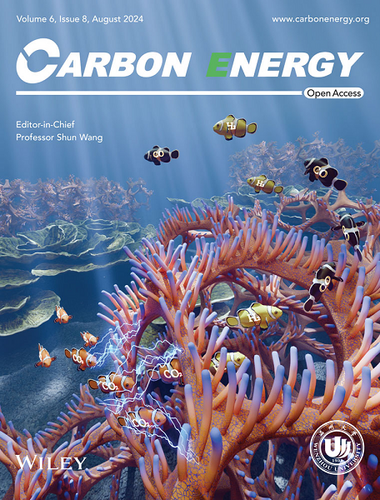Cover Image, Volume 6, Number 8, August 2024
Graphical Abstract
Front cover image: Electrocatalytic CO2 reduction to syngas (CO and H2) offers an efficient way to mitigate carbon emissions and store intermittent renewable energy in chemicals. However, it is tricky to produce an adjustable ratio of syngas due to the difficulty of maintaining a balance between CO2 reduction reaction (CO2RR) and the competing hydrogen evolution reaction (HER). In article number cey2.461, Zhang et al. prepare hierarchical one-dimensional/three-dimensional nitrogen-doped porous carbon (1D/3D NPC) by carbonizing the composite of Zn-MOF-74 crystals in situ grown on a commercial melamine sponge (MS). Benefiting from the unique spatial environment of 1D/3D NPC, the reaction kinetics is significantly improved by increasing specific surface areas, CO2 adsorption, mass transport, and facilitating electron transfer from the 3D N-doped carbon framework to 1D porous carbon. The bifunctional activity of N-doped carbon materials for CO2RR and HER is beneficial for regulating the balance between CO2RR and HER. The carbonizing temperatures can affect the distribution of N species and further dominate syngas composition ratios.





